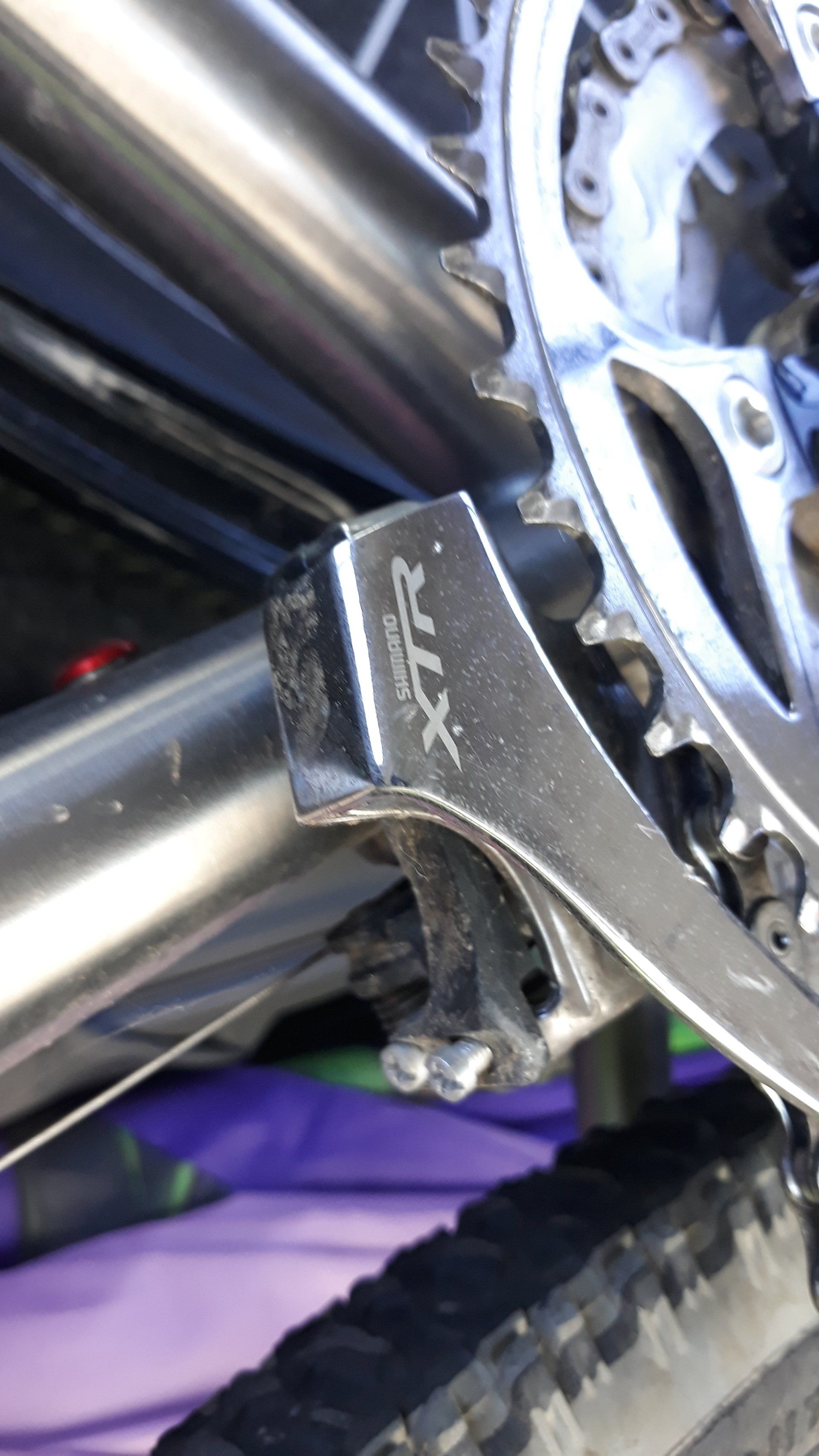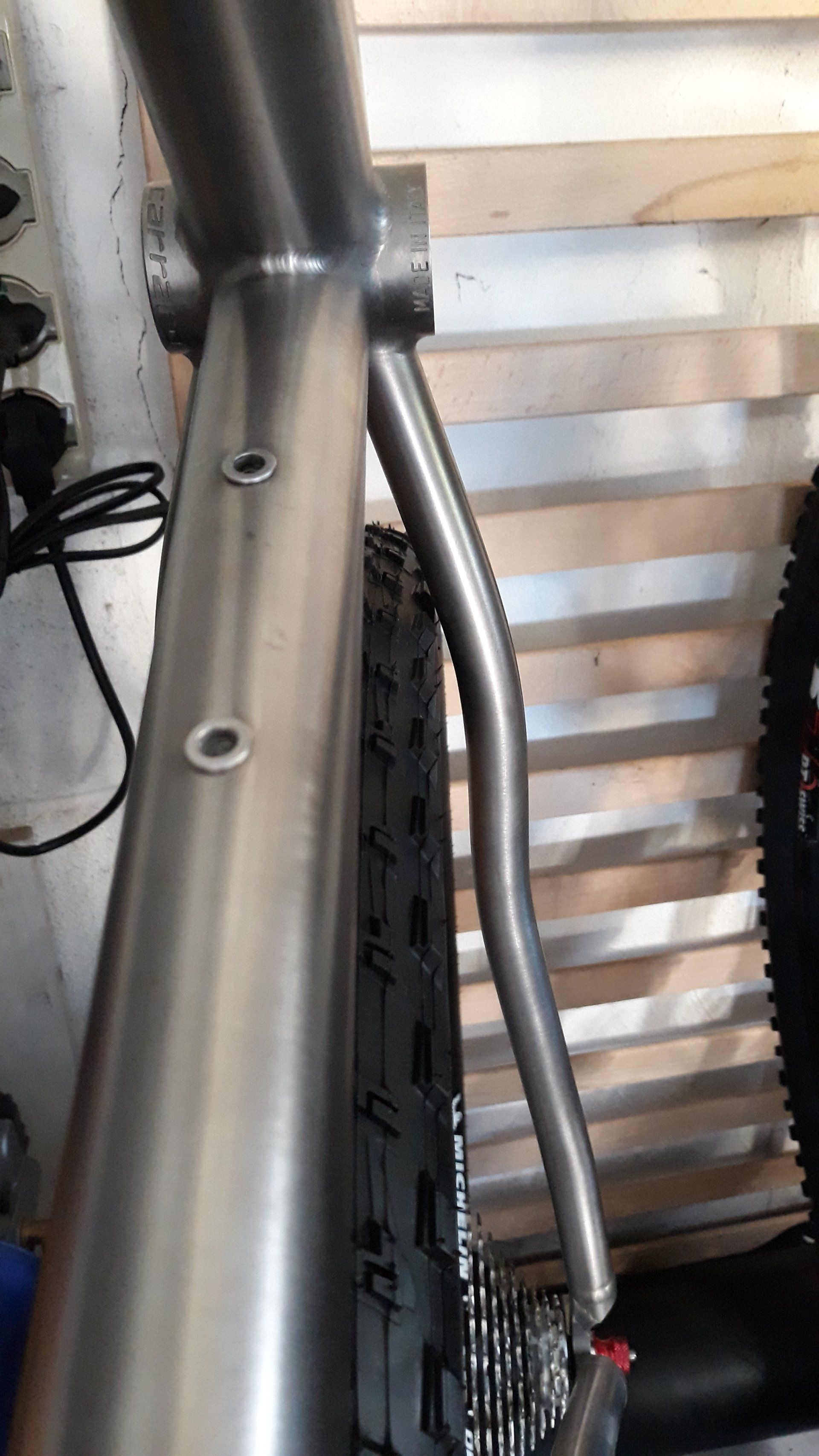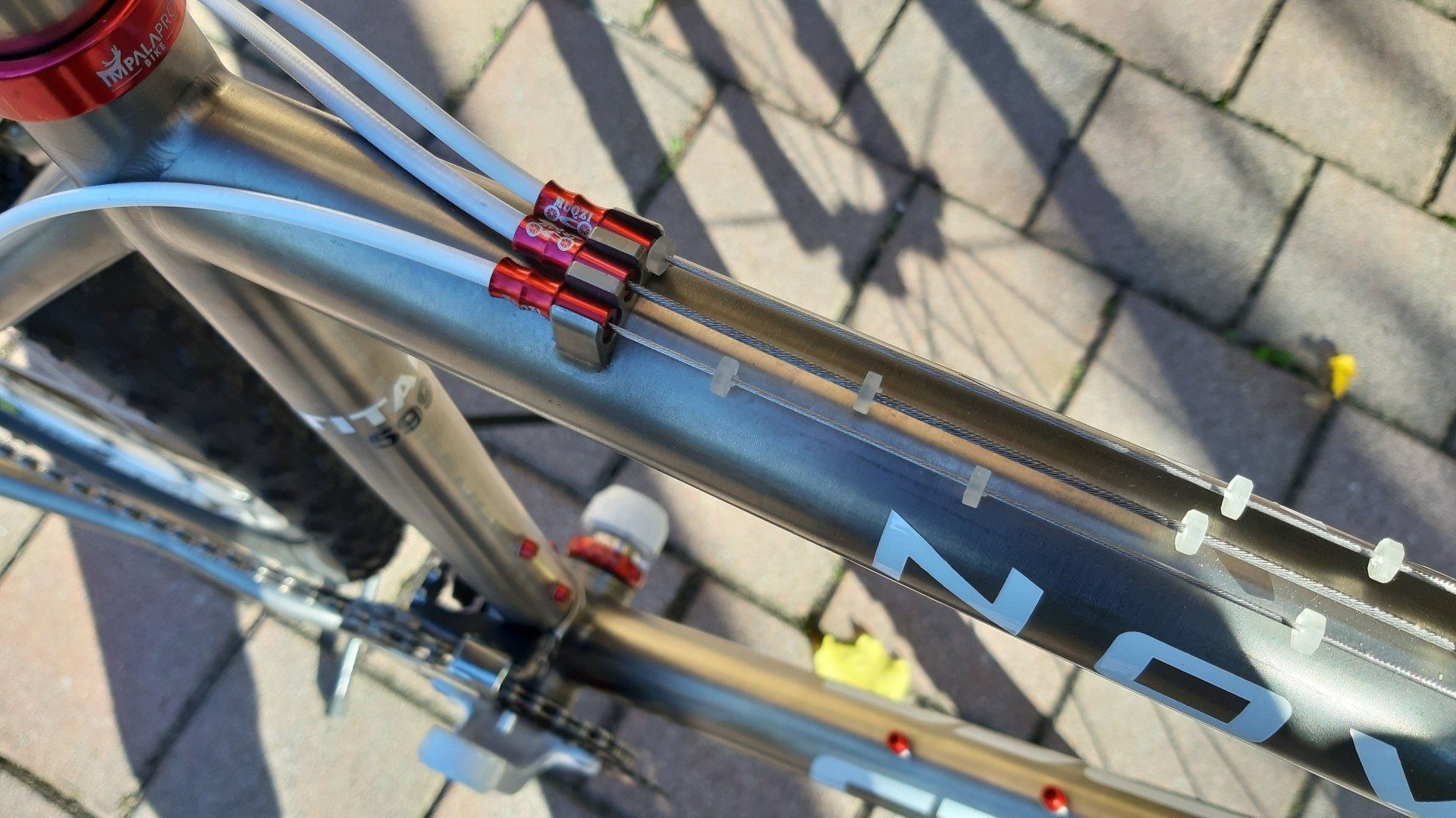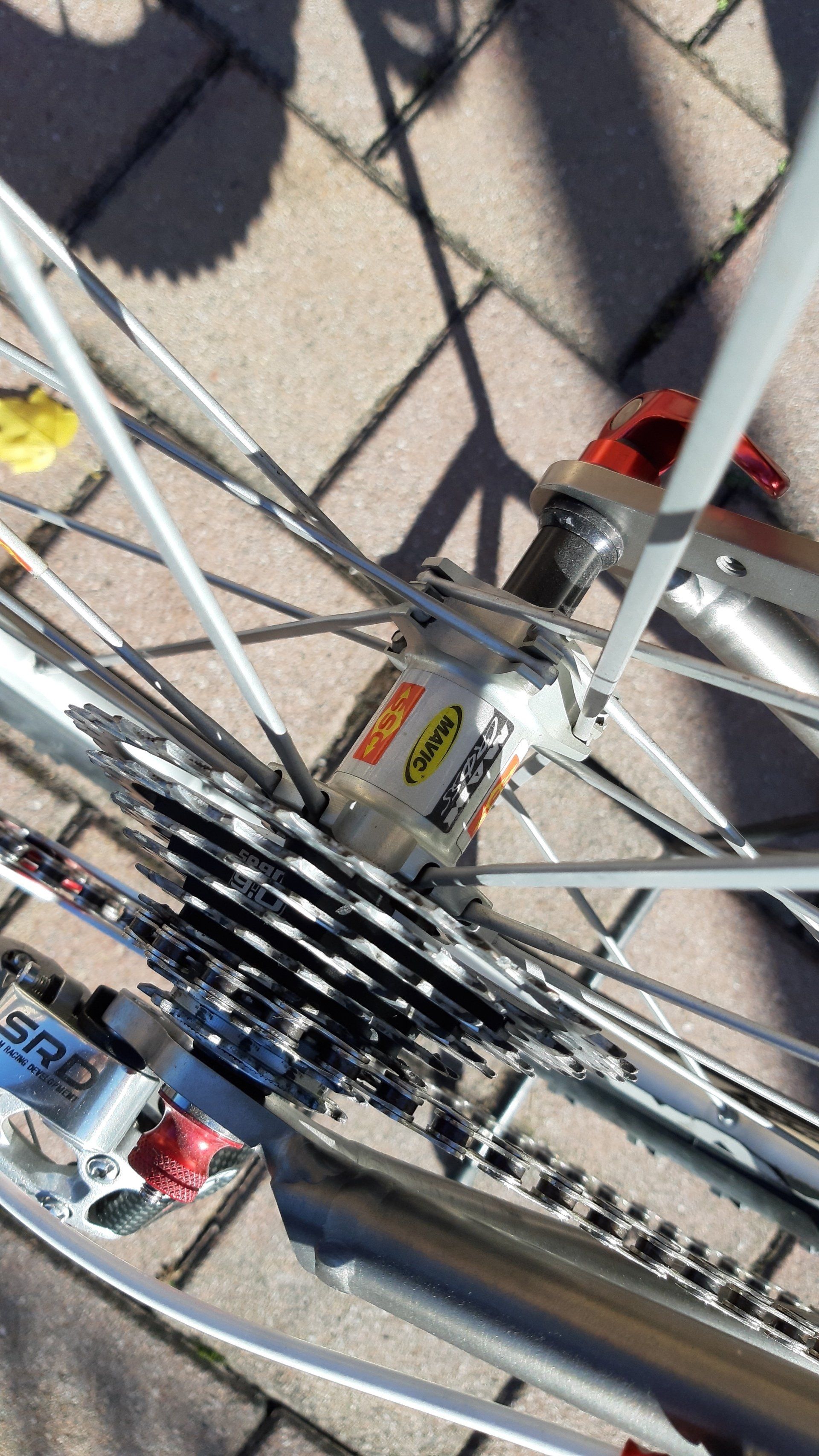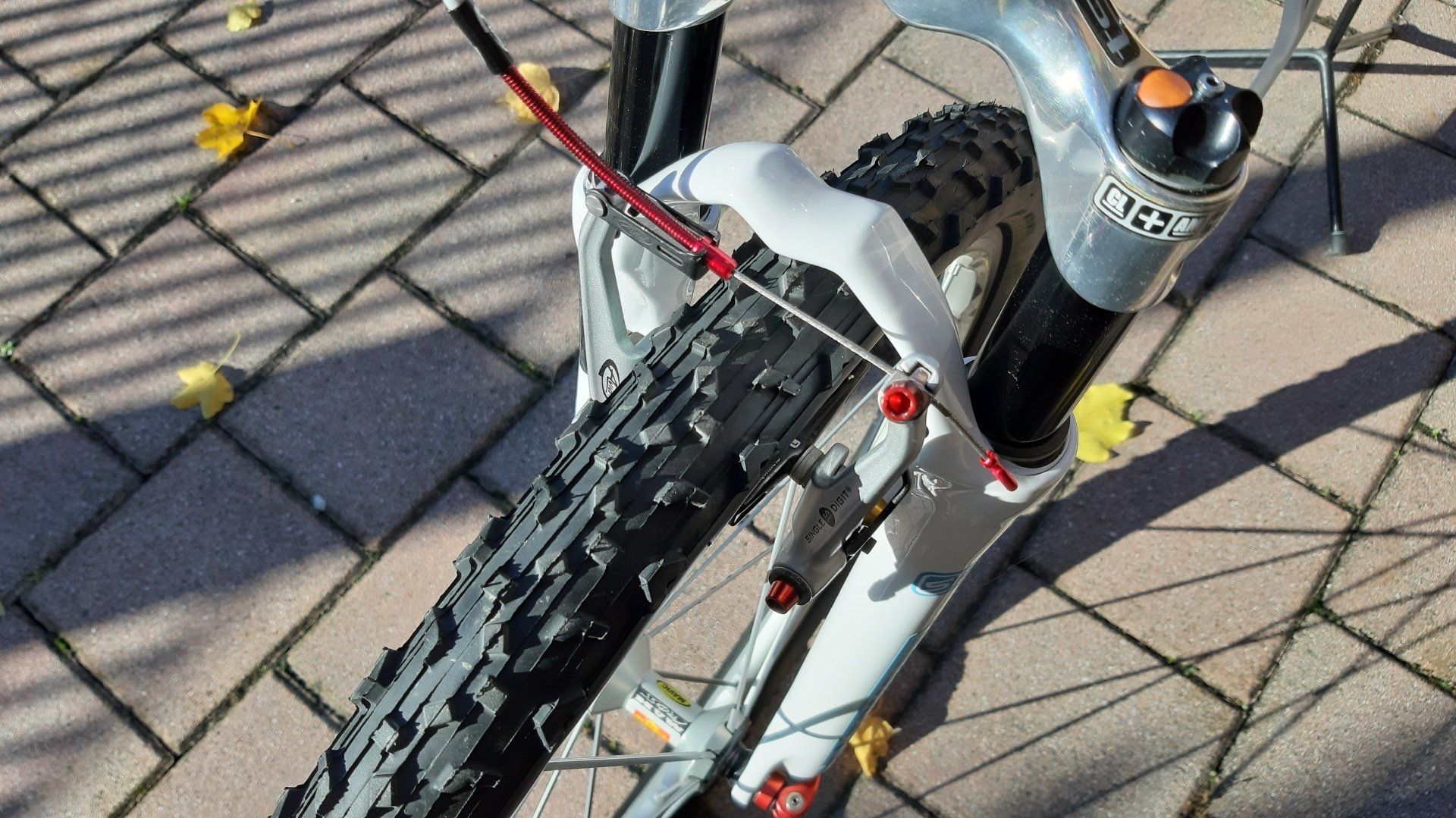After some research and curiosity regarding the frame, I was able to find out (from the engraved serial number) who really produced it for Carraro. The company is Rewel, a leading company in the field of titanium frames and believe it or not, I met (via e-mail) who welded it or rather made it.

Carraro Novekili Titanium
(2005)
New paragraph

bike code
The conditions
The announcement when it was purchased read just like that "Titanium Mountain Bike Price .." the price cannot be said, but the certain thing was taken on the fly and most likely saved from who knows what fate. It was in good condition, also because let's not forget that titanium is almost "eternal" and the new price certainly made itself felt, the only thing that over time the adhesives applied to the frame have deteriorated / damaged and since they are not found more, it was decided to recreate them by painting them, most of the components remained, others replaced to enhance it, let's see how.
New paragraph
The Details
New paragraph
Curiosities of Titanium
Tig welding of a titanium frame
Spotless welds













